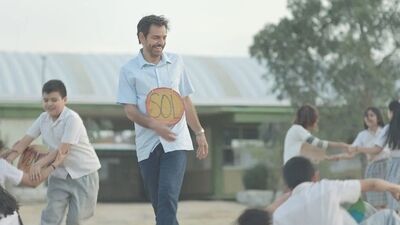Chucho has all but given up on giving the children a meaningful education because the students walk past yellow crime scene tape and murdered bodies on the way to school, the library’s encyclopedia is 30 years old, and the computer lab has been out of service for four years. Most students drop out after sixth grade to help their families or to join gangs. The bored students suffer through lectures, memorization, and busy work.
The school is often derisively referred to as “a place of punishment.” As the students line up in their uniforms for the first day of school, Chucho barks at them, “Silence is the foundation of obedience; obedience is the foundation of discipline, and discipline is the foundation of learning.” He has no interest in challenging established procedures or authorities. If the funding for the computer lab somehow disappeared and the teachers get early copies of the standardized tests so they can be sure to get bonuses when the students memorize the answers, all he can say to Sergio is, “No one gives a damn what happens here … don’t kick the hornets’ nest.”
Sergio Juárez Correa’s work at the José Urbina López Primary School in Matamoros, Mexico, was the subject of a 2013 Wired Magazine article titled, A Radical Way of Unleashing a Generation of Geniuses. One of the students was on the cover with the headline, “The Next Steve Jobs?” Correa was inspired by the ideas of Sugata Mitra, a British professor of educational technology, who proposed student-led learning, an updated, computer-enabled version of the ideas popularized in the 1960s by Summerhill founder A.S. Neill. “What do you want to learn?” Sergio (as he insists the students refer to him) asks. He encourages them not to worry about grades and not to be afraid of mistakes. “Who wants to be wrong first?”
When they first come to his classroom, the students pause at the door because he has turned the desks upside down and piled them in groups. He calls out to them that they are underwater, the desks are boats, and the students will drown if they cannot climb on board. But if there are too many people in a boat, it will sink. How can they determine the right number in each boat to save the most people? This makes the students want to learn about flotation, which means math and physics. It leads one student to ponder how we decide who to save when there is not enough room. Sergio tells her she is a philosopher, like John Stuart Mill. Another student, Paloma (Jennifer Trejo), becomes interested in math and astronomy. Sergio tells her she could be an aerospace engineer. Soon, Sergio has the students out on the playground, each a planet orbiting and spinning.

